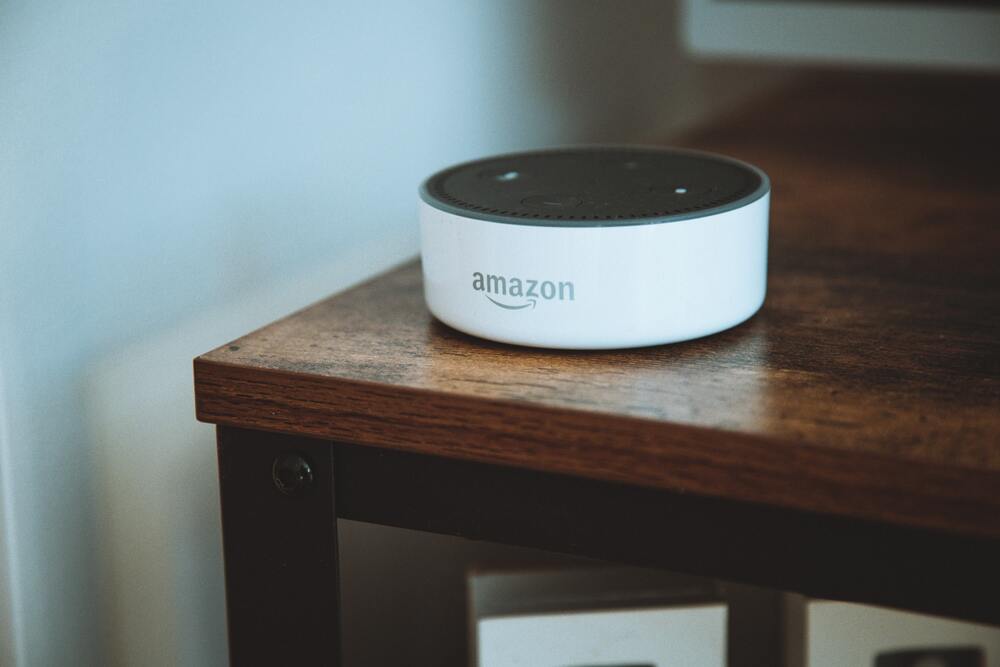With the rise of voice-enabled gadgets, there has also been a rise in consequent privacy concerns. After all, how secure are IoT devices? And can they misuse our data?
- Introduction
- IoT Usage: An Overview
- IoT to Increase Safety
- Privacy Concerns
- Security Measures to Protect your Devices
- Threat of Criminally Minded Hackers
- Conclusion: How to make IoT more secure?
Introduction
Over the past few years, Internet of Things (IoT) devices have become some of the most important technologies of the 21st century. IoT refers to connecting everyday household devices such as kitchen appliances, lights, cars, speakers, thermostats, etc. to the internet.
By embedding household devices to the internet, a seamless mode of communication between people, things, and processes has been made possible.
From Amazon Echo to Google Home, IoT devices have made it possible to play music, set timers, or get information just by listening to the user’s voice. However, the fact remains that the device is always listening to you, even though it is only to pick up instructions.
So many of us can’t help but wonder about how to secure IoT devices really are. Are they always listening to us? And does this put our personal information at risk in our own homes?
Continue reading, and we’ll tell you all that you need to know! Enroll in this internet of things course to understand deeper.
IoT Usage: An Overview
IoT describes the network of devices that are embedded with sensors, software, and other receptors to connect and exchange data with other devices and systems over the internet.
Oracle states that more than 7 billion IoT devices are in use today and IoT will only further expand to get this number to 10 billion by the end of 2020 and 22 billion by 2025.
And this has been made possible due to IoT innovation leveraging low-cost computing, cloud computing, big data, analytics, and mobile technologies to enable physical objects to share and collect data with minimal human intervention. Learn Internet Of Things On Cloud.
While most commonly known IoT devices are smart speakers such as Amazon Echo, there are also smart plugs, lightbulbs, cameras, thermostats, and the smart fridge which rely on IoT communication systems to function. Consequently, these digital systems can record, monitor, and adjust each interaction between connected things.
Outside the home too, IoT devices have made huge strides in the industrial sector. In fact, it has earned a new term for itself, the Industrial IoT (IIoT), which refers to the instrumentation and control of sensors and devices that engage cloud technologies. Further, it covers industries like mining, logistics, transportation, and oil & gas.
Some common applications of the IIoT include:
- Smart manufacturing
- Connected assets and preventive and predictive maintenance
- Smart power grids
- Smart cities
- Connected logistics
- Smart digital supply chains
And as IoT becomes more widespread in the marketplace, companies are capitalizing on the tremendous business value it can offer. The most valuable way in which IoT devices do this is by their ability to collect vast amounts of data for businesses to then monitor and analyze.
However, once again, the elephant in the room remains: are all our conversations being heard all the time, either by an IoT home device or an IIoT device in our place of work?
IoT to Increase Safety
Before we get to answering that question, there’s a rather startling advantage of IoT to consider. It’s that IoT actually has many beneficial uses which can completely transform many lives directly.
The two primary industries we can see this happening are healthcare and for employees who work in hazardous conditions.
With regards to healthcare, IoT devices can make remote robotic surgery possible. This can improve patient outcomes and reduce costs. Moreover, IoT data collection allows healthcare providers to track early signs of illnesses in their patients, allowing for much more proactive preventative care.
And for employees working in hazardous conditions, it is imperative to know about the occurrence of a catastrophic event that might affect them. For example, people working in environments such as mines, oil and gas fields, chemical and power plants can be notified of accidents or rescued from them as swiftly as possible when they are connected to IoT sensor-based applications.
So despite the privacy concerns that we are finally going to discuss, it is important to remember that IoT is not all bad.
Privacy Concerns
With the increasing popularity of IoT, new IoT devices are being launched daily, and very few of them are thoroughly checked for compliance before their release.
The primary source of most IoT security issues is that manufacturers do not spend enough time and resources on security, according to IntellectSoft.
For example, most fitness trackers with Bluetooth remain visible after the first pairing, a smart refrigerator can expose the user’s Gmail login credentials, and a smart fingerprint padlock can be accessed with a Bluetooth key that has the same MAC address as the padlock device.
This is one of the biggest security issues with IoT. While there is a lack of universal IoT security standards, manufacturers continue to create devices with poor security. Manufacturers do not always treat the “security” concept as crucial in their product design process.
The following are some security risks in IoT devices from manufacturers’ end:
- Weak, guessable, or hard-coded passwords
- Hardware issues
- Lack of a secure update mechanism
- Old and unpatched embedded operating systems and software
- Insecure data transfer and storage
This is only made worse when the users of these devices lack a proper understanding of the vulnerabilities of IoT devices and how to protect their information against them.
Other risks for IoT devices include injecting them with malware through an infected USB, the threat of botnets, and deliberate hijacking by hackers.
Security Measures to Protect your Devices
A key point to keep in mind is that IoT devices are not especially vulnerable to Malware attacks. The safety issue is that they do not have regular software security updates that a normal computer does. So, they can be quickly turned into a weapon for destruction and used to traffic large amounts of data without the user’s intent to do so.
However, there are a few steps that IoT users can take to mitigate the threat of their devices getting infected.
Here are some ways to do so:
- Install reputable internet security software on computers, tablets, and smartphones that you connect to your IoT devices
- Use strong and unique passwords for device accounts, Wi-Fi networks, and connected devices. Avoid using common words or generic passwords that are easy to guess
- Be aware when it comes to apps. Always make sure you read the privacy policy of the apps you use to see how they plan on using your information
- Do your research before you buy. Devices become ‘smart’ because they collect a lot of personal data. While collecting data does help them personalize according to user preferences, you should be aware of what types of data the devices collect, how it’s stored, if it is shared with third parties, and the policies or protections regarding data breaches
- Know what data the device or app wants to access on your phone. If it seems unnecessary for the app’s functionality, deny permission
- Use a trusted VPN, which helps to secure the data transmitted on your home or public Wi-Fi
- Check the device manufacturer’s website regularly for firmware updates
- Use caution when using social sharing features with these apps. Social sharing features can expose information like your location and let people know when you are not at home. Cybercriminals can use this to track your movements. That could lead to a potential cyberstalking issue or other real-world threats
- Never leave your smartphone unattended if you are using it in a public space. In crowded spaces, you should also consider turning off Wi-Fi or Bluetooth access if you don’t need them. Some smartphone brands allow automatic sharing with other users in close proximity.
It is important to protect your smartphone to protect your IoT devices, since typically, information such as your email addresses, passwords, and financial information can be easily exchanged between the two.
Threat of Criminally Minded Hackers
We have established some of the existing security issues faced by IoT devices, and discussed some ways to mitigate them as users of these devices.
However, experts are speculating some more risks of IoT devices – with innovations such as the smart car becoming ready for the market – that could prove extremely dangerous in the absence of the right cybersecurity measures put into place. IoT attacks could lead to driverless cars becoming mobile bombs or connected devices that send malware via botnets or spam emails.
Conclusion: How to make IoT more secure?
For businesses, having any kind of IoT mishap can prove to be a nightmare. This could look like the information of their customers being leaked, shipments being damaged due to temperature controls failing, or having their systems infected with malware.
CIOs and other IoT decision-makers need to be proactive in auditing and managing devices, even if it means ‘walking the floors’ to find out what devices are connecting to enterprise networks. And for this, they require a team of solid cybersecurity experts who know exactly what to do to keep their IoT operations secure.
If you are someone who wants a stable and secure career with exciting opportunities, Cybersecurity is the place for you. And for this, upskill with one of the best programs out there to join the ranks of futuristic businesses testing and employing IoT technology. Join Advanced Cybersecurity Program today, and never look back!







